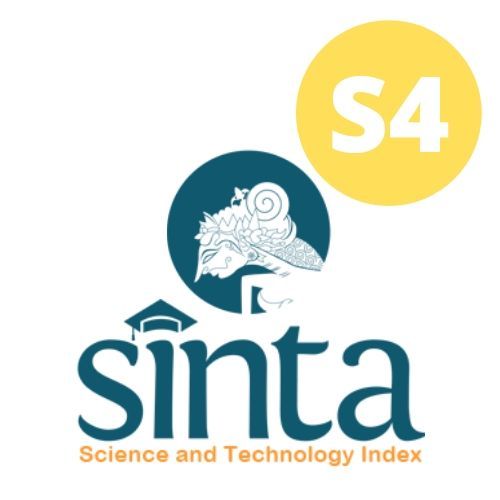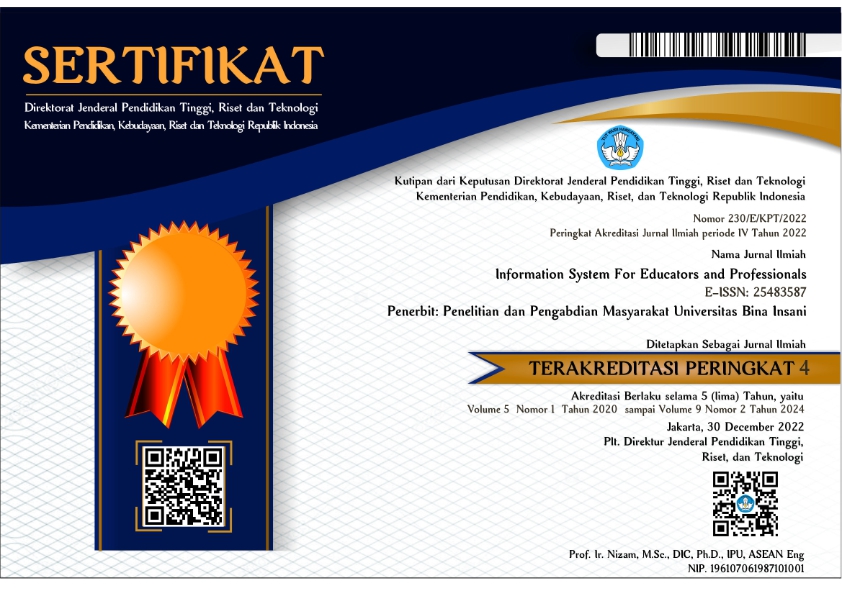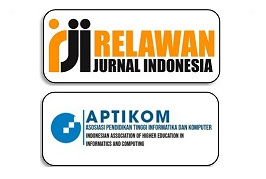Pemodelan Dinamika Sistem untuk Sistem Produksi dan Inventori dalam Remanufakturing Proses Studi Kasus: Perusahaan Kimia di Indonesia
Studi Kasus: Perusahaan Kimia di Indonesia
Abstract
Pengendalian stok barang retur dengan proses manufaktur ulang (remanufacturing) merupakan hal penting bagi banyak perusahaan. Seringkali, kompleksitas proses remanufaktur seperti dalam industri kimia, membuat stok produk retur meningkat dalam inventori. Penelitian ini mengkaji sejumlah strategi pengendalian stok retur menggunakan kerangka closed loop supply-chain remanufacturing dan simulasi sistem dinamik. Pertama-tama, peneliti membuat sebuah model sistem dinamik untuk sistem closed loop supply-chain remanufacturing dengan durasi analisis 60 minggu dan satuan waktu minggu. Model ini divalidasi dengan membandingkan Stock Recoverable Inventory hasil simulasi dengan data yang dikumpulkan dari sebuah perusahaan manufaktur cat. Setelah diperoleh kesesuaian yang baik, model digunakan untuk mengkaji empat skenario pengendalian stok barang retur. Skenario 1 mengkaji proses remanufaktur di mana barang retur yang diterima dari konsumen perlu melalui proses inspeksi. Skenario 2 mengkaji proses remanufaktur dengan peningkatan kapasitas remanufaktur. Skenario 3 mengkaji diterapkannya kebijakan jumlah maksimum dari stok remanufaktur. Skenario 4 mengkaji keadaan di mana kapasitas remanufaktur ditingkatkan dan remanufacturing dan menurunkan lead time remanufacturing. Dari simulasi ke-empat skenario tersebut, dengan meningkatkan kapasitas remanufacturing dan menurunkan lead time remanufacturing selain pengendalian stok remanufacturing yang membaik, total cost dapat dikurangi.References
[1] P. Sugumaran and V. Sukumaran, “Recommendations to improve dead stock management in garment industry using data analyticsâ€, Mathematical Biosciences and Engineering, vol. 16, no. 6, pp. 8121-8133, 2019.
[2] T. Wild, Best practice in inventory management, Routledge, 2017.
[3] R. Li, A. Chiu, and R. Seva, “A Process-Based Dead Stock Management Framework for Retail Chain Store Systemsâ€, RSF Conference Series: Business, Management and Social Sciences, vol. 2, no. 1, pp. 122-128, 2022.
[4] X. Zhang, J. Hu, S. Sun, and G. Qi, “Extended Warranty Strategy and Its Environment Impact of Remanufactured Supply Chainâ€, International Journal of Environmental Research and Public Health, vol. 19, no. 3, pp. 1526, 2022.
[5] E. Katsoras and P. Georgiadis, “A Dynamic Analysis for Mitigating Disaster Effects in Closed Loop Supply Chainsâ€, Sustainability, vol. 14, no. 9, pp. 4948, 2022.
[6] R. Poles, “System Dynamics modelling of a production and inventory system for remanufacturing to evaluate system improvement strategiesâ€, International Journal of Production Economics, vol. 144, no. 1, pp. 189-199, 2013.
[7] Rini, M. Wandita, and N. Ananda, “Analisis kebijakan inventori probabilistik dengan model P-backorder dan Q-backorderâ€, Journal of Industrial Services, vol. 7 no. 1, pp. 1-7, 2021.
[8] Paduloh, et al, “Uncertainty models in reverse supply chain: A reviewâ€, International Journal of Supply Chain Management, vol. 9, no. 2, pp. 139-149, 2020.
[9] S. Miao, D. Chen, and T. Wang, “Modelling and Research on Manufacturer’s Capacity of Remanufacturing and Recycling in Closed-loop Supply Chainâ€, Journal of Statistical Computation and Simulation, vol. 87, no. 17, pp. 3325–3335, 2017.
[10] J. Heydari, K. Govindan, and R. Sadeghi, “Reverse supply chain coordination under stochastic remanufacturing capacityâ€, International Journal of Production Economics, vol. 202, no. 3, pp. 1-11, 2018.
[11] S. Wei, O. Tang, and E. Sundin, “Core (product) Acquisition Management for remanufacturing: a reviewâ€, Journal of Remanufacturing, vol. 5, no. 4, pp. 1-24, 2015.
[12] G.S. San, D. Wahjudi, and Y.Y. Tanoto, “Remanufacturing: Strategi dan Desain dalam Rantai Pasok Lingkaran Tertutupâ€, Jurnal Teknik Mesin, vol. 18, no. 2, pp. 51-59, 2021.
[13] E.A. Rachma, “Optimasi Perencanaan Produksi dengan Menggunakan Model Sistem Dinamik di PT Xâ€, Jurnal Optimasi Teknik Industri (JOTI), vol. 2, no. 1, pp. 36-42, 2020.
[14] B. Ponte, S. Cannella, R. Dominguez, M.M. Naim, and A.A. Syntetos, “Quality grading of returns and the dynamics of remanufacturingâ€, International Journal of Production Economics, vol. 236, no. 108129, 2021.
[15] B. Ponte, M.M. Naim, and A.A. Syntetos, “The value of regulating returns for enhancing the dynamic behaviour of hybrid manufacturing-remanufacturing systemsâ€, European Journal of Operational Research, vol. 278, no. 2, pp. 629-645, 2019.
[2] T. Wild, Best practice in inventory management, Routledge, 2017.
[3] R. Li, A. Chiu, and R. Seva, “A Process-Based Dead Stock Management Framework for Retail Chain Store Systemsâ€, RSF Conference Series: Business, Management and Social Sciences, vol. 2, no. 1, pp. 122-128, 2022.
[4] X. Zhang, J. Hu, S. Sun, and G. Qi, “Extended Warranty Strategy and Its Environment Impact of Remanufactured Supply Chainâ€, International Journal of Environmental Research and Public Health, vol. 19, no. 3, pp. 1526, 2022.
[5] E. Katsoras and P. Georgiadis, “A Dynamic Analysis for Mitigating Disaster Effects in Closed Loop Supply Chainsâ€, Sustainability, vol. 14, no. 9, pp. 4948, 2022.
[6] R. Poles, “System Dynamics modelling of a production and inventory system for remanufacturing to evaluate system improvement strategiesâ€, International Journal of Production Economics, vol. 144, no. 1, pp. 189-199, 2013.
[7] Rini, M. Wandita, and N. Ananda, “Analisis kebijakan inventori probabilistik dengan model P-backorder dan Q-backorderâ€, Journal of Industrial Services, vol. 7 no. 1, pp. 1-7, 2021.
[8] Paduloh, et al, “Uncertainty models in reverse supply chain: A reviewâ€, International Journal of Supply Chain Management, vol. 9, no. 2, pp. 139-149, 2020.
[9] S. Miao, D. Chen, and T. Wang, “Modelling and Research on Manufacturer’s Capacity of Remanufacturing and Recycling in Closed-loop Supply Chainâ€, Journal of Statistical Computation and Simulation, vol. 87, no. 17, pp. 3325–3335, 2017.
[10] J. Heydari, K. Govindan, and R. Sadeghi, “Reverse supply chain coordination under stochastic remanufacturing capacityâ€, International Journal of Production Economics, vol. 202, no. 3, pp. 1-11, 2018.
[11] S. Wei, O. Tang, and E. Sundin, “Core (product) Acquisition Management for remanufacturing: a reviewâ€, Journal of Remanufacturing, vol. 5, no. 4, pp. 1-24, 2015.
[12] G.S. San, D. Wahjudi, and Y.Y. Tanoto, “Remanufacturing: Strategi dan Desain dalam Rantai Pasok Lingkaran Tertutupâ€, Jurnal Teknik Mesin, vol. 18, no. 2, pp. 51-59, 2021.
[13] E.A. Rachma, “Optimasi Perencanaan Produksi dengan Menggunakan Model Sistem Dinamik di PT Xâ€, Jurnal Optimasi Teknik Industri (JOTI), vol. 2, no. 1, pp. 36-42, 2020.
[14] B. Ponte, S. Cannella, R. Dominguez, M.M. Naim, and A.A. Syntetos, “Quality grading of returns and the dynamics of remanufacturingâ€, International Journal of Production Economics, vol. 236, no. 108129, 2021.
[15] B. Ponte, M.M. Naim, and A.A. Syntetos, “The value of regulating returns for enhancing the dynamic behaviour of hybrid manufacturing-remanufacturing systemsâ€, European Journal of Operational Research, vol. 278, no. 2, pp. 629-645, 2019.
Published
2022-09-16
How to Cite
NOOR, Rr Afrida et al.
Pemodelan Dinamika Sistem untuk Sistem Produksi dan Inventori dalam Remanufakturing Proses Studi Kasus: Perusahaan Kimia di Indonesia.
INFORMATION SYSTEM FOR EDUCATORS AND PROFESSIONALS : Journal of Information System, [S.l.], v. 6, n. 2, p. 187 -198, sep. 2022.
ISSN 2548-3587.
Available at: <https://101.255.92.196/index.php/ISBI/article/view/1890>. Date accessed: 24 apr. 2025.
doi: https://doi.org/10.51211/isbi.v6i2.1890.
Section
Articles













